Remember This?
I climbed uncertainly into the (Link) simulator, put the
earphones on and pulled the hood down. It was hot inside. One dim
light illuminated the instrument panel.
Briggs (the Navy NCO in charge of simulator training),
called over the radio, "Are you calm?" He insisted that his pupils
remain calm.
"I'm calm," I said, fighting down the hysterical feeling
that seizes me when pillows are clamped playfull over my
head.
I looked at the instruments. They seemed to be watching
me.
"C'mon, take off," called Briggs impatiently. I heaved back
on the stick and jammed the throttle all the way forward. At this,
the instruments, which had been twitching in excitement, went hog
wild. The whole panel went into a sort of Disney dance.
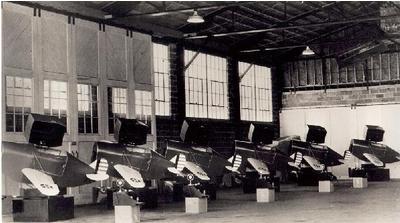
"You better recover," called Briggs weakly. "According to
the altimeter, you are now eight hundred feet below the earth's
surface."
I opened and closed my eyes. It was pitch black, the the
image of a sign... grew larger, until the red painted message
filled the entire cockpit.
The world is coming to an end. Are you ready?
--Charles F. Spalding, John Oris Carney, describing
Spalding's first encounter with a Link Simulator during WWII in
"Love At First Flight," Riverside Press, 1943
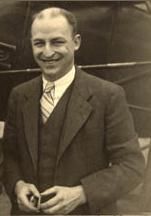 With experiences like that, you might not think
that Ed Link, inventor of the Link IFR simulator, would be the most
popular man on Earth. But then, think of the lives he's undoubtedly
saved.
With experiences like that, you might not think
that Ed Link, inventor of the Link IFR simulator, would be the most
popular man on Earth. But then, think of the lives he's undoubtedly
saved.
Link, who developed the first pilot training device in 1929, was
inducted into the National Inventors Hall of Fame in Akron (OH)
over the weekend.
Link, whose legacy lives on today within L-3 Communications' Link
Simulation and Training division, joins 16 other major aviation and
aerospace leaders in this year's NIHF inductee class. This year's
ceremony will bring the NIHF's total number of inductees to 201
since it was first founded in 1973 by the United States Patent and
Trademark Office and the National Council of Patent Law
Associations.
"Ed Link's contributions to enhancing pilot training and making
aviation safer around the world are extraordinary," said Jim Dunn,
president of L-3 Communications' Link Simulation and Training
division. "As a visionary 75 years ago he recognized the tremendous
value a ground-based flight trainer could bring in improving the
skills of both new and experienced pilots. By inventing the first
pilot training device and continuing to make significant
contributions throughout his aviation career, Ed Link spawned the
creation of what today is a multi-billion dollar simulation
industry."
A Ground-Bound Flight Oddessy
 Link's odyssey in becoming the "Father of Flight
Simulation" began in 1927 when, at the age of 23, he began working
for his father at the Link Piano and Organ Factory in Binghamton
(NY). He built pianos and tuned organs, a job that required a
thorough knowledge of the pumps, valves and bellows that directed
the air power within the instrument. It was during this period that
Link, whose passion was aviation, began to wonder if he could
create a training device that could give pilots the skills they
would need to safely fly.
Link's odyssey in becoming the "Father of Flight
Simulation" began in 1927 when, at the age of 23, he began working
for his father at the Link Piano and Organ Factory in Binghamton
(NY). He built pianos and tuned organs, a job that required a
thorough knowledge of the pumps, valves and bellows that directed
the air power within the instrument. It was during this period that
Link, whose passion was aviation, began to wonder if he could
create a training device that could give pilots the skills they
would need to safely fly.
Link's idea to develop a ground-based flight trainer was given a
boost during a chance meeting with a group of fliers at Wright
Field, OH in 1927. In a book on his life, "From Sky to Sea," Link
said that he watched as a "Major Ocker" tried to help a group of
aviators at Wright Field understand the problems with direction
that are encountered while in flight.
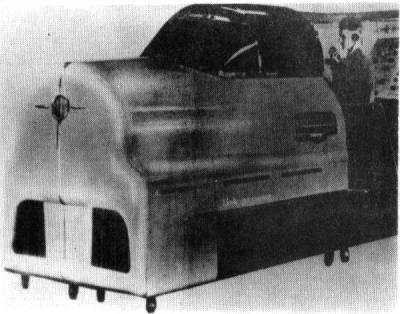
"He'd blindfold the people and twist them around in this seat a
few times, then ask them which way they were turning," Link states
in the book. "They invariably said the wrong way and that was one
of the things that gave me the idea that you could make a whole
airplane to train a pilot to do everything. He (Major Ocker) was
merely demonstrating... that you couldn't tell where you were going
by sight or feel. You had to have an instrument that told you where
you were turning and whether you were flying straight or
level."
Over the next 18 months, Link worked in his father's piano and
organ factory's basement to create a machine that could mimic the
experiences of flying an airplane without ever leaving the ground.
Link applied the principles he had mastered in building fine organs
to the design of his new flight training device. The pilot
trainer's stubby wooden cockpit fuselage was mounted on organ
bellows that Link had borrowed from his father's piano factory. An
electric pump drove the organ bellows that allowed the trainer to
bank, climb and dive as a pilot operated the controls in the
cockpit.
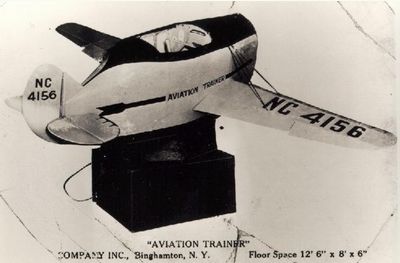
Link received a patent for his new pilot trainer on April 14,
1929, the first in a long series of patents that he would receive
for continued flight simulation innovations. Link upgraded the
trainer in 1933 to include aviation instruments in common use at
the time, such as radio aids and gauges that could tell a pilot if
he was flying level. From instrument flight training to new
navigation techniques to the first trainer designed to simulate
flight in a jet-powered aircraft, Link trainers would continue to
evolve and set new standards of excellence in pilot training.
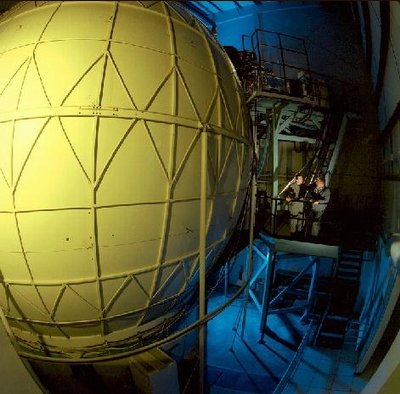
The Legacy Lives On
Today, Link simulators are providing training for pilots and
aircrews on some of the world's most advanced military aircraft.
Link has built simulators for aircraft platforms including the B-2,
F-117, F/A-22, F/A-18, F-16, C-130, T-45 and a wide range of
attack, reconnaissance and transport helicopters.
Link Simulation and Training is a systems integration
organization that specializes in delivering and supporting training
systems and equipment that enhance operational proficiency. Link
has major operations in Arlington (TX), Binghamton (NY), Orlando
(FL), Broken Arrow (OK), and Phoenix (AZ).
 ANN's Daily Aero-Term (12.19.25): Ultrahigh Frequency (UHF)
ANN's Daily Aero-Term (12.19.25): Ultrahigh Frequency (UHF) NTSB Prelim: Cirrus Design Corp SR22T
NTSB Prelim: Cirrus Design Corp SR22T Classic Aero-TV: The Red Tail Project--Carrying the Torch of the Tuskegee Airmen
Classic Aero-TV: The Red Tail Project--Carrying the Torch of the Tuskegee Airmen Aero-News: Quote of the Day (12.19.25)
Aero-News: Quote of the Day (12.19.25) Airborne 12.17.25: Skydiver Hooks Tail, Cooper Rotax Mount, NTSB v NDAA
Airborne 12.17.25: Skydiver Hooks Tail, Cooper Rotax Mount, NTSB v NDAA







